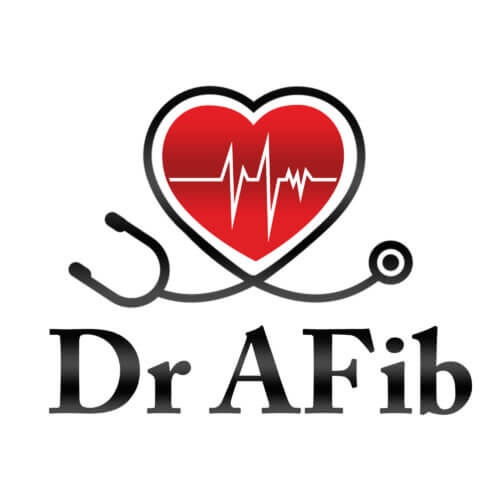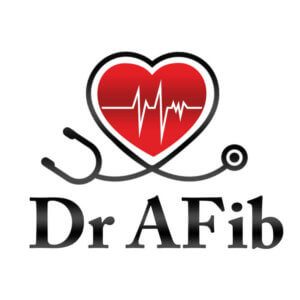Pulsed field ablation (PFA) is the latest and increasingly popular non-thermal technique for treating atrial fibrillation (AF). It uses high-energy electric pulses to precisely target heart tissue, minimizing damage to surrounding areas and reducing complications. This article will cover how PFA works, impressive safety record, its benefits over traditional methods, and the latest research findings.
Key Takeaways
- Pulsed Field Ablation (PFA) offers a significant advancement in treating atrial fibrillation by using high-energy electric pulses, minimizing collateral damage, and reducing recovery time compared to traditional thermal ablation methods.
- PFA operates on the principle of electroporation, targeting cardiac cells selectively and reducing the risk to surrounding tissues, making it a safer and more precise treatment option for atrial fibrillation ablation.
- Clinical trials, including the PULSED AF and ADVENT studies, have demonstrated the safety and high efficacy of PFA, with low adverse event rates and significant clinical success in both paroxysmal and persistent atrial fibrillation cases.
Understanding Pulsed Field Ablation

Pulsed Field Ablation (PFA) represents a significant advancement in the treatment of atrial fibrillation (AF). Unlike traditional thermal ablation techniques that use heat (radiofrequency) or cold (cryoablation), PFA employs short bursts of high-energy electric pulses to perform ablation on the heart tissue responsible for AF. This non-thermal approach offers several advantages:
- Minimizes collateral damage to surrounding structures like the esophagus and phrenic nerve, which are often at risk during thermal ablation.
- Provides a more precise and targeted treatment.
- Reduces the risk of complications.
- Offers a shorter procedure and recovery time.
The underlying principle of PFA is the different energy-induced damage thresholds of various tissues. For over 18 years, researchers have been developing this method, aiming to create a safer, more efficient treatment for AF. The result is a technique that not only offers good durability but also significantly reduces procedure and recovery times compared to conventional ablation methods.
A distinctive feature of PFA is its capacity to perform pulmonary vein isolation (PVI) with a reduced risk of complications like pulmonary vein stenosis and esophageal injury. Both U.S.-approved PFA systems (PulseSelect and FaraPulse) are designed for this purpose, making them a crucial tool in the treatment of AF.
The advantages of PFA surpass mere safety and efficiency. Patients undergoing PFA often experience shorter recovery times and fewer complications compared to those treated with traditional thermal ablation techniques. This makes PFA an attractive option for both paroxysmal and persistent atrial fibrillation patients.
In conclusion, PFA constitutes a promising substitute for conventional thermal ablation techniques, offering a more effective, faster, and safer treatment for symptomatic atrial fibrillation. The development of PFA marks a significant step forward in the field of cardiac ablation, offering new hope to millions of AF patients worldwide.
Mechanism of Action
Pulsed Field Ablation (PFA) works on the principle of electroporation. Electroporation is a technique that delivers rapid, high-voltage, pulsed electrical fields to tissue. This process causes cell membranes to become permeable. This method targets cardiac cells selectively, sparing surrounding tissues, thus being a perfect solution for treating atrial fibrillation.
PFA induces electroporation by using ultra-short high voltage pulses that lead to irreversible electroporation, resulting in targeted cell death. This selective targeting is crucial in minimizing collateral damage to structures such as the pulmonary veins, phrenic nerve, and esophagus. Unlike thermal methods, which can cause broader tissue damage, PFA preserves the structural integrity of the atrial tissue while effectively inducing strategic cardiac cell death.
Studies have shown that PFA has a preferential effect on cardiomyocytes over pulmonary venous tissue and myelinated nerve cells, further reducing the risk of damage to surrounding tissues. This selectivity is a significant advantage of PFA, as it ensures that the treatment is both effective and safe.
PFA’s capacity to limit collateral damage while effectively treating atrial fibrillation renders it a superior substitute to conventional thermal ablation methods. By understanding the mechanism of action, we can appreciate the innovation and precision that PFA brings to the field of cardiac electrophysiology.
Electroporation Process
Electroporation is central to the process of Pulsed Field Ablation (PFA). It involves:
- Creating temporary or permanent pores in cell membranes through the application of an electric field
- Increasing cell membrane permeability
- Allowing for the selective targeting of cardiac cells responsible for atrial fibrillation.
When strong electric fields are applied to cells, the electrical conductivity of the cell membrane changes, creating aqueous pores. This permeability can be temporary or permanent, depending on the intensity of the electric field used. In the case of PFA, the aim is to achieve irreversible electroporation, leading to cell necrosis within microseconds.
This process’s speed is a significant benefit over conventional thermal ablation methods, which need extended durations to yield similar effects. By inducing cell death quickly and precisely, PFA minimizes the risk of damage to surrounding tissues and shortens the overall procedure time.
Reversible vs. Irreversible Electroporation
The intensity of the electric field applied during electroporation determines whether the effect is reversible or irreversible. Reversible electroporation allows cell membranes to repair themselves, making it useful for applications like gene or drug insertion into cells. However, for cardiac ablation, the goal is to induce irreversible electroporation, which causes targeted permanent cell death.
Irreversible electroporation results in cell death primarily through necrosis and apoptosis. This is achieved by creating permanent pores in the cell membrane, leading to the disruption of cellular functions and ultimately cell death. The decision between reversible and irreversible electroporation in PFA depends on the desired outcome, with irreversible electroporation being the preferred method for inducing targeted cardiac cell death and treating atrial fibrillation.
The ability to adjust the intensity of the pulsed electric field in PFA allows for precise control over the electroporation process, ensuring that the treatment is both effective and safe. By understanding the differences between reversible and irreversible electroporation, we can appreciate the precision and innovation that PFA brings to cardiac ablation.
Safety and Efficacy Evidence
Numerous clinical trials and studies have proven the safety and efficacy of Pulsed Field Ablation (PFA). One of the most notable studies, the PULSED AF study, reported a primary adverse event rate of just 0.7%, making it one of the safest AF ablation trials conducted in the U.S.. This low rate of adverse events is a testament to the precision and safety of PFA.
In addition to its safety, PFA has also shown high efficacy in treating atrial fibrillation. The clinical success rate, defined as freedom from symptomatic atrial arrhythmias, was 80% for paroxysmal AF and 81% for persistent AF in the PULSED AF study. These impressive results highlight the potential of PFA as a highly effective treatment for AF.
Preclinical and clinical studies have also shown that PFA spares surrounding tissues such as:
- the esophagus
- blood vessels
- pericardium
- nerves
This selective targeting minimizes the risk of complications and makes PFA a promising alternative to traditional thermal ablation methods.
Further evidence of PFA’s effectiveness comes from the PULSED AF study, reporting a 66.2% effectiveness rate for paroxysmal AF and 55.1% for persistent AF after one year. These results demonstrate the durability and long-term efficacy of PFA in treating atrial fibrillation.
In general, the evidence for PFA’s safety and efficacy is compelling, presenting it as a promising option for patients suffering from atrial fibrillation. The combination of low adverse event rates and high success rates positions PFA as a leading treatment in the field of cardiac ablation.
Clinical Trials Overview
The PULSED AF study is one of the largest and most comprehensive clinical trials investigating the safety and efficacy of Pulsed Field Ablation (PFA) for atrial fibrillation. This study treated 300 patients across 41 sites in nine countries, providing a robust data set for evaluating the Medtronic PulseSelect System. Patients underwent rigorous arrhythmia monitoring, with regular assessments at three, six, and twelve months, as well as weekly symptomatic trans-telephonic monitoring.
The results of the PULSED AF study were impressive, with a freedom from atrial arrhythmia recurrence rate of 70% for paroxysmal atrial fibrillation and 62% for persistent AF at 12 months. These findings highlight the potential of PFA to provide long-term relief from atrial fibrillation.
The ADVENT trial was another pivotal study that evaluated the efficacy and safety of the FARAPULSE PFA Ablation System for treating atrial fibrillation. Key findings from the trial include:
- High Efficacy: The trial demonstrated a high clinical success rate, with a significant percentage of patients achieving freedom from atrial arrhythmias. This underscores the effectiveness of the FARAPULSE system in treating both paroxysmal and persistent atrial fibrillation.
- Safety Profile: The ADVENT trial reported a low incidence of adverse events, highlighting the safety of the FARAPULSE system. Specifically, there were minimal occurrences of complications such as pulmonary vein stenosis, esophageal injury, and phrenic nerve damage, which are commonly associated with traditional thermal ablation methods.
- Procedure Efficiency: The study found that the FARAPULSE system allows for shorter procedure times compared to conventional ablation techniques. This efficiency translates to reduced overall time spent in the catheterization lab and potentially quicker recovery times for patients.
- Selective Targeting: The trial confirmed the system’s ability to selectively target cardiac cells responsible for atrial fibrillation while sparing surrounding tissues. This selective targeting is crucial for minimizing collateral damage and improving patient outcomes.
- Durability: Follow-up data from the ADVENT trial indicated that the benefits of the FARAPULSE system are durable over time, with sustained clinical success rates observed at 12 months post-procedure.
Other significant trials have also supported the safety and efficacy of PFA, further establishing it as a viable alternative to traditional thermal ablation methods.
FDA Approval of PFA Systems for AFib Ablation
The first FDA approval of Pulsed Field Ablation (PFA) systems in 2023 marked a significant milestone in the treatment of atrial fibrillation (AFib). This approval paves the way for the widespread adoption of PFA technology, offering a safer and more effective alternative to traditional thermal ablation methods.
Two leading companies, Medtronic and Boston Scientific, have received FDA approval for their PFA systems. Medtronic’s PulseSelect Pulsed Field Ablation System and Boston Scientific’s FARAPULSE PFA System are both designed to achieve pulmonary vein isolation with minimal risk of complications. These systems employ high-energy electric pulses to selectively target cardiac cells responsible for AFib, sparing surrounding tissues and reducing the risk of adverse events.
The approval of these PFA systems is based on extensive clinical trials and studies demonstrating their safety and efficacy. The PULSED AF study, which evaluated Medtronic’s PulseSelect System, reported a primary adverse event rate of just 0.7% and high clinical success rates for both paroxysmal and persistent AFib. Similarly, Boston Scientific’s FARAPULSE System has shown promising results in clinical trials, with high efficacy and low complication rates.
The FDA approval of these PFA systems represents a significant advancement in the field of cardiac electrophysiology, providing patients with a cutting-edge treatment option for atrial fibrillation. As more healthcare providers adopt these technologies, the benefits of PFA are expected to reach a broader patient population, improving outcomes and quality of life for those suffering from AFib.
Comparing PFA with Traditional Thermal Ablation
Pulsed Field Ablation (PFA) provides numerous benefits over conventional thermal ablation methods, making it an appealing alternative for managing atrial fibrillation. One of the key benefits of PFA is its ability to create cardiac lesions non-thermally and in seconds, significantly reducing the risks associated with thermal ablation methods, such as atrioesophageal fistula and pulmonary vein stenosis.
The rapid energy application in PFA results in:
- Shorter procedure times compared to traditional thermal ablation techniques
- Reduced overall time patients spend undergoing the procedure
- Minimized risk of complications associated with prolonged ablation times.
- Increased likelihood of same day discharge after AFib ablation
Another significant benefit of PFA is its ability to target cardiac cells selectively, while sparing nearby tissues. PFA has been shown to have a selective impact on cardiomyocytes in animal studies. At the same time, it spares blood vessels and surrounding nervous structures. This selectivity helps to minimize collateral damage and reduce the risk of complications.
Overall, the advantages of PFA over traditional thermal ablation techniques make it a compelling option for treating atrial fibrillation. However, it is essential to consider both the benefits and limitations of each method to make an informed decision about the best treatment approach.
Advantages of PFA
A major advantage of Pulsed Field Ablation (PFA) is its capability to reduce the risk of complications like pulmonary vein stenosis and phrenic nerve injury, which are often associated with traditional ablation procedures. Thermal ablation techniques, such as radiofrequency and cryoablation, carry a higher risk of causing these complications due to the use of heat or cold to create lesions.
PFA, on the other hand, uses a non-thermal approach to create lesions, significantly reducing the risk of pulmonary vein stenosis and protecting surrounding structures, such as the phrenic nerve. This makes PFA a safer option for patients undergoing cardiac ablation.
The PULSED AF study found a low incidence of major complications. Specifically, there were no cases of:
- esophageal injury
- phrenic nerve injury
- pulmonary vein injury
- thrombo-embolism-stroke
These findings highlight the safety and efficacy of PFA in treating atrial fibrillation.
Limitations and Challenges
Despite its manifold benefits, Pulsed Field Ablation (PFA) also has its own set of limitations and challenges. One of the primary challenges is the need for standardized protocols and optimal parameters to ensure consistent therapeutic outcomes. The current variability in energy delivery parameters poses a significant challenge for achieving uniform results across different patients and clinical settings.
Further research is necessary to fully understand the long-term effects of PFA on cardiac tissue and adjacent structures. While initial studies have shown promising results, unresolved issues such as optimal energy intensity, pulse duration, and frequency need to be addressed to optimize the therapy.
There are also potential complications associated with PFA, such as coronary artery spasm and pulmonary artery hemorrhage. Additionally, like any cardiac catheterization and ablation procedure, there are risks of access site complications, arrhythmias, cardiac arrest, and more severe conditions such as stroke or tissue infarction. Proper precautions and adherence to protocols are essential to mitigate these risks and ensure patient safety. In general, it appears as though the overall risk profile of PFA ablation procedures is significantly less when compared to traditional radio-frequency ablation.
Current Applications and Future Directions

Presently, Pulsed Field Ablation (PFA) is mainly utilized in clinical practice to treat atrial fibrillation through pulmonary vein isolation. The technique’s ability to achieve pulmonary vein isolation with minimal risk makes it a valuable tool in the treatment of AF, with increasing popularity across the United States and worldwide.
Ongoing research aims to expand the applications of PFA beyond atrial fibrillation to other cardiac arrhythmias, such as ventricular arrhythmias. Early preclinical data suggest that PFA may offer superior efficacy and safety profiles compared to traditional thermal energy-based approaches for these conditions.
The future prospects of PFA seem promising, with several clinical trials and studies in progress to delve deeper into its long-term outcomes and effectiveness. The PULSED AF clinical trial and the MANIFEST-PF study are among the significant research efforts exploring the potential of PFA in treating various arrhythmic conditions. These studies are expected to provide valuable insights that will guide the future use of PFA in clinical practice.
Technological advancements are also anticipated to enhance the accuracy and effectiveness of PFA procedures. Innovations such as the miniaturization of catheters and the integration of artificial intelligence and machine learning algorithms hold the potential to revolutionize the field of cardiac electrophysiology. These advancements will enable more precise targeting of abnormal cardiac cells and improve the overall outcomes of PFA treatments.
In the coming years, we can expect:
- New PFA systems to be introduced
- New catheters to be introduced
- More options for treating arrhythmic diseases
- The continuous evolution of PFA technology
- Ongoing research to ensure that this innovative technique remains at the forefront of cardiac ablation therapies.
Ongoing Research and Trials
Several ongoing clinical trials are investigating the long-term outcomes and efficacy of Pulsed Field Ablation (PFA) in treating atrial fibrillation. The PULSED AF clinical trial is a notable study that treated 300 patients across 41 sites in nine countries, evaluating the safety and efficacy of the PulseSelect System for atrial fibrillation ablation. The results of this trial have shown comparable efficacy to thermal ablation methods and a very low incidence of adverse events.
The MANIFEST-PF study, which involved 1,758 atrial fibrillation patients and was conducted across 24 centers, utilized a pentaspline PFA catheter. This study is considered to be significant. This study reported a high success rate in isolating pulmonary veins, further supporting the effectiveness of PFA in treating AF.
Early preclinical data suggest that PFA may offer superior efficacy and safety profiles compared to traditional thermal energy-based approaches for certain arrhythmias. As new PFA systems are developed, these research efforts are expected to provide transformative care for patients with arrhythmic diseases.
Technological Innovations
Technological advancements are poised to significantly enhance the accuracy and effectiveness of Pulsed Field Ablation (PFA) procedures. One of the key innovations is the miniaturization of catheters, which enables their use in smaller and more complex anatomical structures. This advancement allows for more precise targeting of abnormal cardiac cells, improving the overall outcomes of PFA treatments.
The integration of artificial intelligence (AI) and machine learning algorithms into PFA systems holds the potential to revolutionize the field of cardiac electrophysiology. These technologies can:
- Enhance the accuracy of PFA procedures by providing real-time data analysis and decision support
- Ensure optimal energy delivery
- Minimize the risk of complications
Within the next year, several new catheters and systems utilizing pulsed field therapy are expected to be introduced. These advancements will provide more options for treating arrhythmic diseases and further solidify PFA’s position as a leading technique in cardiac ablation therapies.
PFA vs. Traditional Ablation Methods for Freedom from Atrial Fibrillation
Current data suggest that the treatment outcomes for atrial fibrillation (AFib) using Pulsed Field Ablation (PFA) systems are comparable to those achieved with traditional thermal radio-frequency ablation methods. Clinical trials and studies have shown similar efficacy rates in terms of symptom relief and arrhythmia recurrence for both PFA and traditional ablation techniques. This indicates that PFA is just as effective in treating AFib as its thermal counterparts.
However, where PFA truly stands out is in its safety profile. The non-thermal nature of PFA significantly reduces the risk of complications commonly associated with traditional ablation methods, such as pulmonary vein stenosis, esophageal injury, and phrenic nerve damage. Studies like the PULSED AF and ADVENT trials have reported lower adverse event rates for PFA, highlighting its superior safety compared to traditional thermal ablation.
Despite these promising results, it is important to note that the long-term success rates for AFib treatment with PFA ablation are still under investigation. Ongoing studies and clinical trials aim to provide more comprehensive data on the durability and long-term efficacy of PFA. As research continues, we can expect to gain a deeper understanding of the potential benefits and limitations of this innovative treatment approach.
Summary
In summary, Pulsed Field Ablation (PFA) represents a groundbreaking advancement in the treatment of atrial fibrillation. Its selective targeting of cardiac cells, combined with its non-thermal approach, offers numerous advantages over traditional thermal ablation techniques. PFA has demonstrated high efficacy, with impressive clinical outcomes and low adverse event rates.
The ongoing research and technological innovations in PFA are expected to further enhance its accuracy and effectiveness, expanding its applications to other arrhythmias and improving patient outcomes. By understanding the mechanism of action, safety and efficacy evidence, and the advantages and limitations of PFA, patients and healthcare providers can make informed decisions about this innovative treatment.
As we look to the future, PFA holds the potential to revolutionize the field of cardiac electrophysiology, offering hope to millions of patients suffering from arrhythmic diseases. The continuous evolution of PFA technology and ongoing research will ensure that this innovative technique remains at the forefront of cardiac ablation therapies.
Frequently Asked Questions
What is Pulsed Field Ablation (PFA)?
Pulsed Field Ablation (PFA) is a non-thermal cardiac ablation technique that uses high-energy electric pulses to selectively target and treat heart tissue responsible for atrial fibrillation. It offers faster procedure times and reduced risk compared to traditional methods.
How does PFA work?
PFA works by inducing electroporation in cardiac cells, causing cell membranes to become permeable and leading to cell death.
What are the advantages of PFA over traditional thermal ablation?
The advantages of PFA over traditional thermal ablation include reduced risk of complications, shorter procedure times, and selective targeting of cardiac cells while sparing surrounding tissues. Overall, PFA presents significant safety benefits in comparison to traditional thermal ablation.
What are the potential risks and complications of PFA?
The potential risks and complications of PFA include electric shock, foreign body reactions, thermal injury, coronary artery spasms, and pulmonary artery hemorrhage. It’s crucial to take proper precautions and follow protocols to reduce these risks.
What should patients consider before undergoing PFA?
Before undergoing PFA, patients should consider the risks of procedure, the importance of anticoagulation therapy, potential adverse events, and the need for the procedure to be performed by a trained physician in a fully equipped cardiac catheterization facility.
The Best Atrial Fibrillation Book
Your Complete Guide To AFib: The Essential Manual For Every Patient With Atrial Fibrillation
$15.95 (as of May 5, 2025 11:52 GMT -06:00 - More infoProduct prices and availability are accurate as of the date/time indicated and are subject to change. Any price and availability information displayed on [relevant Amazon Site(s), as applicable] at the time of purchase will apply to the purchase of this product.) The A to Z guide on everything you need to know about atrial fibrillation. Written by AFib expert Dr. Percy Morales MD. Over 120 pages of essential information on medications, procedures, and lifestyles modifications for AFib. Easy to read for every patient.
Shop AFib Products on Amazon
KardiaMobile 6-Lead Personal EKG Monitor – Six Views of The Heart – Detects AFib and Irregular Arrhythmias – Instant Results in 30 Seconds – Works with Most Smartphones - FSA/HSA Eligible
13% Off
KardiaMobile 1-Lead Personal EKG Monitor – Record EKGs at Home – Detects AFib and Irregular Arrhythmias – Instant Results in 30 Seconds – Easy to Use – Works with Most Smartphones - FSA/HSA Eligible
$79.00 (as of May 5, 2025 12:10 GMT -06:00 - More infoProduct prices and availability are accurate as of the date/time indicated and are subject to change. Any price and availability information displayed on [relevant Amazon Site(s), as applicable] at the time of purchase will apply to the purchase of this product.)
Apple Watch Series 9 [GPS 41mm] Smartwatch with Storm Blue Aluminum Case with Silver Sport Band M/L. Fitness Tracker, Blood Oxygen & ECG Apps, Always-On Retina Display
(as of May 5, 2025 04:41 GMT -06:00 - More infoProduct prices and availability are accurate as of the date/time indicated and are subject to change. Any price and availability information displayed on [relevant Amazon Site(s), as applicable] at the time of purchase will apply to the purchase of this product.)
Fitbit Sense 2 Advanced Health and Fitness Smartwatch with Tools to Manage Stress and Sleep, ECG App, SpO2, 24/7 Heart Rate and GPS, Shadow Grey/Graphite, One Size (S & L Bands Included)
20% Off
OMRON 2-in-1 Upper Arm Blood Pressure Monitor & 1-Lead EKG Monitor - Clinically Validated Blood Pressure Arm Cuff & Machine - Use OMRON Connect App
19% Off
EMAY Portable ECG Monitor | Record ECG and Heart Rate Anytime Anywhere | Stand-Alone Device with LCD Screen and Storage | No Subscription Required
$109.00 (as of May 5, 2025 04:41 GMT -06:00 - More infoProduct prices and availability are accurate as of the date/time indicated and are subject to change. Any price and availability information displayed on [relevant Amazon Site(s), as applicable] at the time of purchase will apply to the purchase of this product.)
Samsung Galaxy Watch 6 44mm Bluetooth Smartwatch, Fitness Tracker, Personalized HR Zones, Advanced Sleep Coaching, Heart Monitor, BIA Sensor, Health Wellness Insights, Big Screen, US Version, Graphite
26% Off
Natural Rhythm Triple Calm Magnesium 150 mg - 120 Capsules – Magnesium Complex Compound Supplement with Magnesium Glycinate, Malate, and Taurate. Calming Blend for Promoting Rest and Relaxation.
$20.77 ($0.17 / Count) (as of May 5, 2025 12:17 GMT -06:00 - More infoProduct prices and availability are accurate as of the date/time indicated and are subject to change. Any price and availability information displayed on [relevant Amazon Site(s), as applicable] at the time of purchase will apply to the purchase of this product.)
Pure Encapsulations Magnesium (Glycinate) - Supplement to Support Stress Relief, Sleep, Heart Health, Nerves, Muscles, and Metabolism* - with Magnesium Glycinate - 180 Capsules
$44.60 ($0.25 / Count) (as of May 5, 2025 04:41 GMT -06:00 - More infoProduct prices and availability are accurate as of the date/time indicated and are subject to change. Any price and availability information displayed on [relevant Amazon Site(s), as applicable] at the time of purchase will apply to the purchase of this product.)
















![Apple Watch Series 9 [GPS 41mm] Smartwatch with Storm Blue Aluminum Case with Silver Sport Band M/L. Fitness Tracker, Blood Oxygen & ECG Apps, Always-On Retina Display #1](https://m.media-amazon.com/images/I/311xwtp4mFL._SL100_.jpg)
![Apple Watch Series 9 [GPS 41mm] Smartwatch with Storm Blue Aluminum Case with Silver Sport Band M/L. Fitness Tracker, Blood Oxygen & ECG Apps, Always-On Retina Display #2](https://m.media-amazon.com/images/I/41j+8AaUGsL._SL100_.jpg)
![Apple Watch Series 9 [GPS 41mm] Smartwatch with Storm Blue Aluminum Case with Silver Sport Band M/L. Fitness Tracker, Blood Oxygen & ECG Apps, Always-On Retina Display #3](https://m.media-amazon.com/images/I/41jIyxZitnL._SL100_.jpg)
![Apple Watch Series 9 [GPS 41mm] Smartwatch with Storm Blue Aluminum Case with Silver Sport Band M/L. Fitness Tracker, Blood Oxygen & ECG Apps, Always-On Retina Display #4](https://m.media-amazon.com/images/I/41IpNJERjCL._SL100_.jpg)
![Apple Watch Series 9 [GPS 41mm] Smartwatch with Storm Blue Aluminum Case with Silver Sport Band M/L. Fitness Tracker, Blood Oxygen & ECG Apps, Always-On Retina Display #5](https://m.media-amazon.com/images/I/31o17yhfYpL._SL100_.jpg)











































